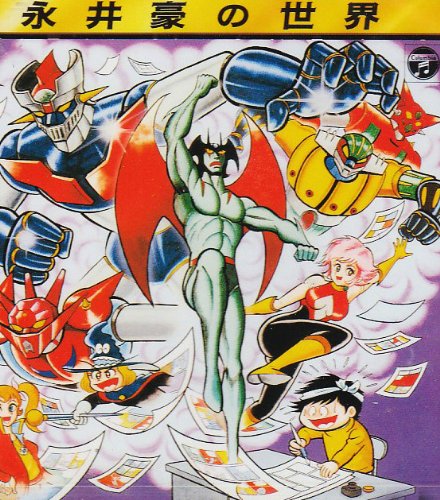
Along with other icons such as Shotaro Ishinomori and Leiji Matsumoto, Go Nagai is one of the top names of anime and manga during Generation X. Originally from Ishikawa prefecture, Nagai-sensei is the fourth of five children and moved to Tokyo after the passing of his father. During his childhood, he was a big fan of manga, most especially the big name of his childhood, Osamu Tezuka. In his late teenage years, he aimed to become a manga artist with the support of his brother, but with strong opposition from his mother. His mother’s opposition was strong to the point he felt that she contacted publishers to reject him! Eventually, Shounen Sunday and Shotaro Ishinomori noticed his potential and he became an assistant to the 1970s legend.
Due to his association with Ishinomori-sensei who was also, in turn, a student of Tezuka-sensei, Nagai-sensei tends to keep his character designs very consistent and uses a lot of the fashion of the time with his characters. With a majority of his prime being throughout the 1970s, his coloring and other visuals will have a very psychedelic feel to it, which sucks readers into its bizarre stories. Due to these visuals, some would say that Nagai-sensei is similar to that of Steve Ditko, the co-creator of Spider-Man and Doctor Strange.
He became an instant success in the manga world and was the subject of the media. When Shueisha got into the manga business with Shounen Jump in 1968, they recruited Nagai-sensei to be part of the magazine. His debut with the hit Shounen Jump was Harenchi Gakuen, which would introduce the perverted tropes that you see in anime and manga today. Some would call it the first hentai manga but the sexuality was pretty tame compared to true hentai when the sexuality was meant for humor. In fact, Nagai-sensei said he came up with the idea when remembered peeking through the girl’s locker room as a high school student, and he just wanted to exaggerate the teenage experience. After that, many of his other works would be a bit on the racy side, and would further pave way for the hentai genre. So for today, we will cover some of Go Nagai’s greatest hits!
5. Kekkou Kamen
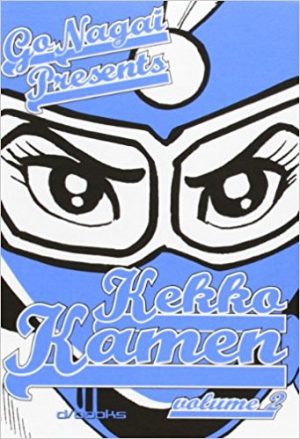
- Genres: Comedy, Erotic, Action
- Volumes: 5
- Published: Sept 1974 – Feb 1978
If you thought Harenchi Gakuen was crazy, Kekkou Kamen takes it to the next level to the point that you think Nagai-sensei was on some crazy kind of acid when he made this manga. If any school should be outlawed, it is the Sparta Academy where if any girl makes the slightest mistake, they would be sexually subjected to the perverted teaching staff and its crazy principal, the Toenail of Satan. Unable to tolerate the humiliation that the female students go through, an unknown hero dressed only in boots, gloves and a red mask comes to their rescue, and she is only known as Kekkou Kamen.
Kekkou Kamen is pretty much a what you see is what you get kind of series, and it’s also a series that you’re either going to love or hate. The title itself is really a parody of a series from Nagai-sensei’s youth, Gekko Kamen (Moonlight Mask), one of Japan’s first pulp heroes. Granted the synopsis may not be out of the norm by today’s quantity of whacked out titles, Kekkou Kamen for its time was further paving way for Nagai-sensei’s unorthodox eroticism mixed with action and comedy, and showing the blueprint to the hentai genre having its identity. The action is appropriately suggestive and crazy to fully exploit the character. If anything, the 70s was full of exploitation movies and this manga is one of the first to take advantage of that fad.
4. Violence Jack
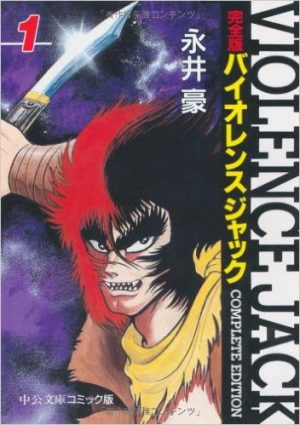
- Genres: Horror, Action, Fantasy, Drama, Sci-fi
- Volumes: 18
- Published: Jul 1973 – Mar 1990
Though the anime version of Violence Jack has been met with controversy and is considered one of the worst animes ever, do not let that distinction discourage you from reading the manga. For starters, it is a true sequel to Devilman (which the anime avoids from telling audiences) and a prequel to Devilman Lady. Though Hokuto no Ken would popularize the post-apocalyptic setting in manga during the 80s, Violence Jack would be the first. The series itself takes place in Eastern Japan, and due to the events of Devilman with Devilman and Satan’s battle, the region is cut off from the rest of the country and has become lawless. The only one who has power is a demonic being known as the Slum King, who has taken Ryo Asuka, the Earth incarnation of Satan as his pet. And the only one capable of standing up to the brutal rule of the Slum King is a giant beast of a man named Jack and always has his trusty blade with him.
The anime is controversial for the right reasons and we’ll leave it at that. Jack in the manga goes through tremendous development throughout the series from apathetic to the damage he causes in his fights to being aware of his surroundings, especially for women and children. In addition, the series features characters that are homages to Nagai-sensei’s previous works such as Cutie Honey and Jim Mazinger. The ending to this manga makes the journey of reading it through (especially if you start from Devilman) come full circle. It is a sad shame that the anime really does nothing to live up to the fleshed out story the manga provides, and why it is distinguished on this list since it is probably the pinnacle of Nagai-sensei’s works throughout his prime. We are given a brutal series, but the setting it presents perfectly justifies why it is the way it is.
3. Mazinger Z
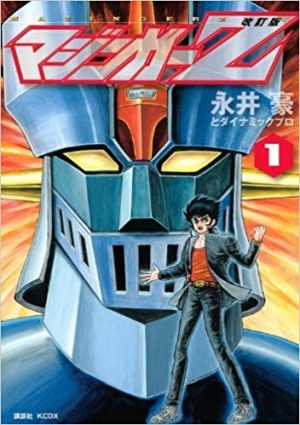
- Genres: Mecha
- Volumes: 5
- Published: Oct 1972 – Aug 1974
One day, an excavation team in Mount Fuji discovers a new alloy called Super-Alloy Z. Thanks to this special alloy, Professor Juzo Kabuto creates a giant robot called Mazinger Z to fight the evil Mechanical Beasts made by the diabolical Dr. Hell, who found an ancient Greek civilization that had the technology to make their own robot warriors. Shortly after completing the Mazinger Z robot, Prof. Kabuto is killed by Dr. Hell’s evil henchman, Baron Ashura, and it is up to Kabuto’s grandson, Kouji, to stop the Underground Empire once and for all.
Just like how older James Bond films will feel cheesy and out of touch, but with still a lot of charm to enjoy, Mazinger Z perfectly fits that bill. Shortly before the mech genre would be part of the military genre, mechs were more like superheroes. Mazinger Z had these features that made sense for its setting but were not realistic by today’s standards of the genre. It had rocket boosters on its feet, it could do rocket punches, and had missiles where they shouldn’t be technologically logical and so on.
What makes Mazinger Z is that it is probably the father of the modern day mech, with Tetsujin-28 (or Gigantor), which Nagai-sensei takes influences from, can be seen as the Grandfather of mecha. For Mazinger Z, it was the first mech to have a pilot inside the mech and have various weapons. Though it would later influence the mech of today, Guillermo Del Toro admitted to being a fan of the series as a child and would be one of his inspirations for Pacific Rim. Though its popularity wasn’t that big in the US, it was popular in Spain to the point that a statue was made there.
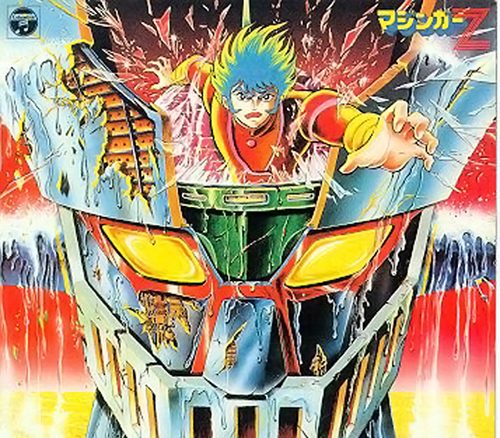
2. Devilman
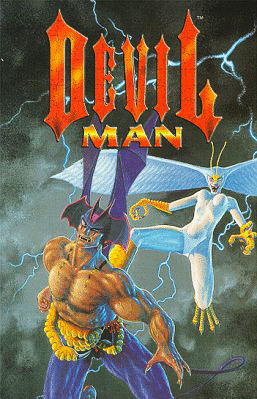
- Genres: Horror, Action, Supernatural
- Volumes: 5
- Published: June 1972 – June 1973
Akira Fudo is a weak and timid kid who is a target for bullies. Due to his parents being out of the country, he stays with the family of his childhood friend, Miki Makimura, who is more masculine than him. One day, Akira’s best friend, Ryo Asuka, takes him to his house and shows Akira a demon skull mask that his father discovered in a Mayan temple. When one puts on the mask, they can see that the world was once ruled by demons and they are coming back with a vengeance. Shortly after, they come back and Akira is about to be possessed by a demon named Amon, but Akira’s purity allows him to gain the power of Amon to become Devilman and fight the rest of the demons.
This series is probably one of Nagai-sensei’s most trippy mangas one could ever read. The various designs of the demons are very captivating and frightening. The action is very gruesome and violent and the ending does have a sensible realism that is consistent with its atmosphere. Years later, Nagai-sensei would share that the series was meant to show his feelings about World War II and Vietnam. He shares that demons possessing humans were meant to symbolize the draft, how the death of Miki’s parents as a result due to misleading propaganda, and its ending shows that nothing good can come out of a senseless conflict. When reading this series with these themes in mind, readers can understand how ugly war and humankind can be at its most evil of forms.
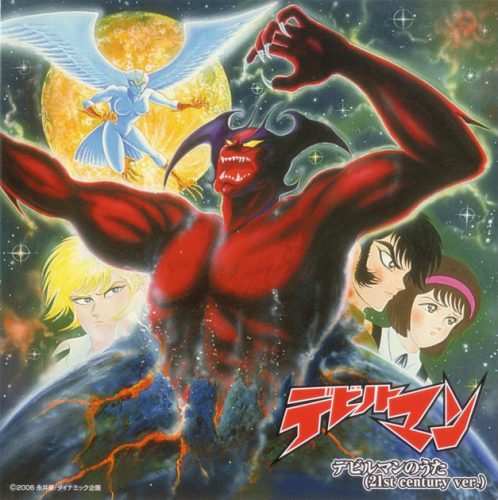
1. Cutie Honey

- Genres: Magical girl, Action, Adventure
- Volumes: October 1973 – April 1974
- Published: 2
For our number one recommendation, we give Cutie Honey. The world is being threatened by a terrorist organization known as Panther Claw who conduct numerous unethical science experiments and commit numerous crimes. In order to combat this threat, a scientist named Kisaragi creates an android named Honey, whose base form is that of his dead teenage daughter. After her activation, she becomes the hero the world needs. By screaming Honey Flash with the help of her collar, she can assume any disguise she wishes. Along with her transforming abilities, she has great strength and combat skills.
Though the series is Sci-fi in nature, many credit Cutie Honey for paving way for the magical girl genre. In addition, she is considered the first heroine in Shonen publications. Like a good portion of Nagai-sensei’s hits, there will be plenty of fan service and is used with good timing for humor purposes. Throughout the years, the series has had numerous incarnations in other manga, anime and even live action! The character has established a very unique legacy on numerous fronts and her appeal is never ending which is why she is her series is our number one recommendation. No matter what version you get, it is very faithful to its foundation and still keeps some of its seventies qualities with the fashion and psychedelic colors.
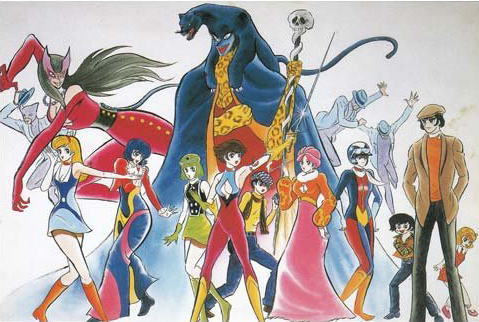
Final Thoughts
Trying to figure out what to recommend and how to order them was sure a very difficult task. So we got some honorable mentions to share and they go out to Jushin Liger, Getter Robo, Iron Virgin Jun, Susan OH, and Shutendoji. Nagai-sensei is a very unique legend that has been a figure in Japanese media that paved way for numerous genres. In a way, you can compare him to American talk radio host, Howard Stern, who paved his medium in very controversial ways but made his fame and fortune out of it. Beyond manga and anime, Nagai-sensei has a brief cameo in the Troma cult hit, The Toxic Avenger II and in live-action adaptations of Cutie Honey.
Many hit artists of various mediums claim to be influenced by him. For starters, Evangelion creator Hideaki Anno said he is a fan of his works and would later direct the live action version of Cutie Honey. Berserk creator Kentaro Miura has shared in interviews that he is largely influenced by Nagai-sensei and if any of you readers are familiar with both Berserk and Nagai-sensei’s mangas, you can notice numerous similarities. With his mangas still getting adaptations whether they are in anime and/or live action form, and with many artists being influenced by him, his place in the world of Japanese entertainment is written in the stars.

